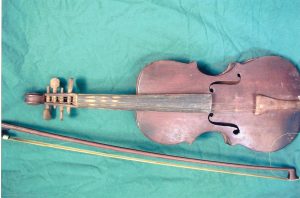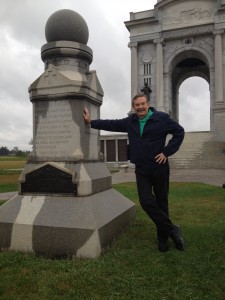In several earlier posts I told of my great-great grandfather, Tom Pixley, and his adventurous early years. Tom settled down around 1870 after he moved to Neosho County, Kansas. There he homesteaded 160 acres of land and married my great-great grandmother, Mary Jane Orcutt. At the time he was thirty years old and she was only fifteen. Because she was so young, Mary Jane’s father had to give his permission – he did, and it is so written on their marriage license.
Discovering Tom’s early life was a detective story; solved by looking for clues and then searching for facts, but much of my research into the Orcutt family has come from family memoirs. I have heard it said when anyone of a “Certain Age” renews their driver’s license, there should be two requirements. One is to pass the eye test without cheating and the second is to show proof they’ve started writing their memoirs. Without the women of the Orcutt family fulfilling the second requirement much of their story would have been lost one hundred years ago. Now I want to introduce Mary Jane’s family, the Orcutt’s.
The Orcutt family patriarch, and the man who gave his permission for my great-great grandparents to marry, was my three times great grandfather, Daniel Dolph Orcutt. Daniel was born in New York State in 1816; I know this because in eleven separate federal, state and territorial censuses, from 1850 until 1900, his birth state was always recorded as New York and his declared age was always consistent with an 1816 birth year. I learned Daniel relocated to Indiana sometime before turning twenty, because in 1835 he purchased forty acres of land in Shelby County, Indiana from the US Government – I found an image of his original land purchase at blm.gov. Three years later Daniel married Pamelia Gosnell in Decatur County, Indiana and record of that marriage was available online from the Indiana State Library.
Using the 1840 Federal Census I discovered Daniel’s father, Steven Orcutt, also moved to Indiana, and I learned Daniel had two younger brothers and a younger sister – but I didn’t learn their names. You see, in the 1840 census the only name recorded was that of the white male head of family. The names of other family members were not recorded – just the number and ages of any free white males and females living in the home.
Daniel and Pamelia started their family as soon as they were married, three sons and a daughter were born in Indiana and then the Orcutt’s moved to Poweshiek County, Iowa around 1846. I can figure about when they moved because in the 1850 census their daughter, Merietta, was listed as being five years old and born in Indiana, while their son, Hezekiah, was listed as being three years old and born in Iowa. One more son, Darwin, was born in 1849, and then Daniel was blessed with an unbroken string of six daughters – for a total of twelve children! Many of the stories about my family’s life in those early days have been passed along through the stories and writings their children and grandchildren.
Merietta, the oldest Orcutt daughter, told stories of a time before the Civil War when the family lived in Iowa. She remembered being awakened some nights by voices and quietly creeping to a trap door in the attic, where she and the other children slept. From her perch Merietta could see her father and mother serving food to colored people, mostly men she remembered. Marietta later learned these were runaway slaves who had been hidden by day in a cave near her father’s orchard. After dark Daniel would load the runaways into his farm wagon and, after covering them with hay, would drive to the next hiding place along the Underground Railroad. Each group of runaway slaves would thus be covertly moved from house to house until reaching safety in Canada, where they would not be returned to their southern masters. Daniel never told where he took the runaways but Marietta figured it was to a nearby neighbor, because Daniel always returned before daylight.
The Orcutt family remained in Iowa until after the Civil War when they moved to Kansas, drawn by the US Government’s offer of free land. By then many of the Orcutt sons were old enough to own their own farms and staked out homesteads near each other. In fact, in 1870 there were so many Orcutt’s in their little corner of Kansas the US Post Office called the area “Orcuttville” and appointed Daniel its postmaster. That same year Daniel’s and Pamelia’s seventeen year old daughter, Clarenda, married a man named Delos Evans in Cass County, Missouri. I found proof of their marriage online in the Records of Missouri Marriages: 1805 to 2002. The importance of this marriage to my family will become evident in just a few more paragraphs.
My great aunt Floria (Daniel’s great granddaughter) wrote how Daniel owned a farm and a general store in Neosho County. The 1880 Federal Census confirmed he was a farmer, but provided another very interesting piece of information. One of the census questions asked that year was if anyone was sick and Daniel complained of dyspepsia, which is indigestion – a small inconvenience, but his wife, Pamelia, claimed a more serious illness … Erysipelas. Erysipelas is a streptococcal infection that causes skin lesions with a painful rash that can lead to further infections, skin necrosis and death. Today it is cured with an antibiotic, but in 1880 Erysipelas was like a terminal case of shingles – poor Pamelia must have been in agony.
In her memoir, Daniel’s granddaughter told of his decision to leave hot and dry Kansas and move to the Pacific Northwest for its cool moist ocean air, which Daniel hoped would be more comfortable on Pamelia’s enflamed skin. It was their daughter, Clarenda, who knew about the mild climate in Washington because there is where now she lived – I told you Clarenda’s marriage was important to this story. You see, if Clarenda hadn’t married Delos back in 1870 she wouldn’t have moved west before her mother became ill, so she wouldn’t have encouraged the move and my family may well have stayed put in Kansas.
I knew Clarenda lived in Washington because the same 1880 census that told of Pamelia’s illness also showed Clarenda and Delos were living south of Tacoma in the little town of Kalama. Delos told the census taker he worked for the railroad, and so Kalama makes sense because that is where it was envisioned the north to south rails of the Oregon Railway Company would intersect with the transcontinental the rails of the Northern Pacific Railroad.
Daniel took Clarenda’s advice and sold both his farm and general store. In the spring of 1881 the couple joined a wagon train heading west; Daniel was sixty six years old and Pamelia sixty one. Even at his ripe old age Daniel was a handy guy to have on a difficult journey; he could make or fix almost anything, and along the way he made a violin out of scrap wood which he played at nights to keep everyone’s spirits up. I now have his old fiddle.

The Orcutt Violin
It took their wagon train almost six months to reach Washington and from my family’s memoirs I know the journey did nothing to improve Pamelia’s condition. Late that fall Clarenda sent a letter back to Kansas telling her brothers and sisters of their mother’s failing health and urging them to come west quickly. Three of her sons and one daughter, my great-great grandmother, decided to sell everything and follow their parents west. There was urgency to get going because they knew Pamelia was dying, yet they couldn’t leave until the following year – you see, wagons are pulled by horses and horses need fresh grass along the way for food … and grass doesn’t grow in the winter.
A total of twenty six Orcutt’s left Kansas the spring of 1882, racing west to reach their mother.
To be continued …

 I don’t want to just find my ancestors; I want to discover their life stories and maybe unwind a few family mysteries along the way. Ancestry.com is great for identifying those long dead relatives, but sometimes the best information is not on line at all, sometimes you have to go looking for an original document in a courthouse or church. I love that kind of search, where my reward is finding a document that has been untouched for over a hundred years.
I don’t want to just find my ancestors; I want to discover their life stories and maybe unwind a few family mysteries along the way. Ancestry.com is great for identifying those long dead relatives, but sometimes the best information is not on line at all, sometimes you have to go looking for an original document in a courthouse or church. I love that kind of search, where my reward is finding a document that has been untouched for over a hundred years.
Recent Comments